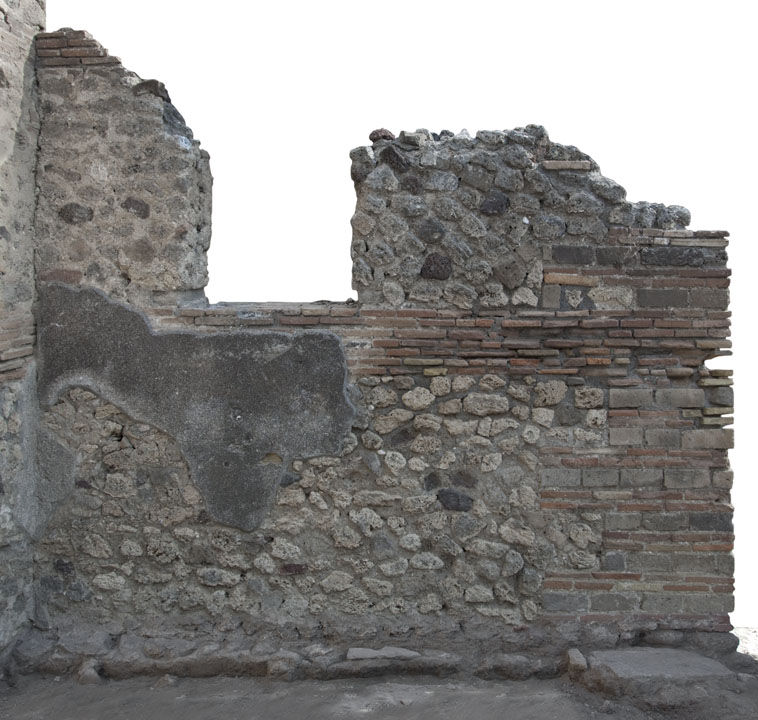East Wall
Description
Henrik Boman
East wall also functioning as door post to the door opening to room 1, the area in front of the counter direct accessible from the large doorway 32.
The southern part of the wall functioning as door fame to the large door to room 1. This part of the wall is constructed in opus vittatum mixtum, with the two (for opus mixtum) typical brick bands extending across the wall. The upper brick band is only preserved at the top northern part of the wall.
Other parts of the wall are built in opus incertum, almost exclusively in lime stone. Some reused (?) tufa blocks are visible in the wall south of the window, and in this area, some rectangular cut lime stones are used in the opus vittatum mixtum, signifying a modern repair (?) of the southernmost parts of the upper wall. Though, plaster is preserved on the opposite wall face in room 6, up to a level of the last tufa band, signifying than any modern work on the wall is repairs, not an extensive rebuilding of the wall.
Window: An internal window (the lower brick band functioning as window sill) to room 6, height unknown. The brick paved surface of the window sill (lower) is modern, though imprints in the masonry on each side of the window indicate that some kind of paving or support (wood or stone) originally decorated the sill. The imprint is approx. 0.1 m on each side, the northern is more articulated. There is ancient mortar in the northern imprint, indicating its original state of construction. The window is 0.8 in width, and preserved to a height of 0.8 m, the original height is not possible to establish today.
Plaster: A large area of preserved plaster covers the lower incertum wall, the corner to the north wall, the lower brick band and parts of the middle incertum wall. The plaster is of the same grey type as found on other walls in the building.
In the middle incertumwall, the preparation mortar of the masonry is found still in situ, giving the surface of the wall a smooth appearance, a feature we have observed several other location in the complex.

